Back to all Blog posts
Mission Day 11: Orbicella faveolata, where art thou?
Dawn Kernagis // August 5, 2016
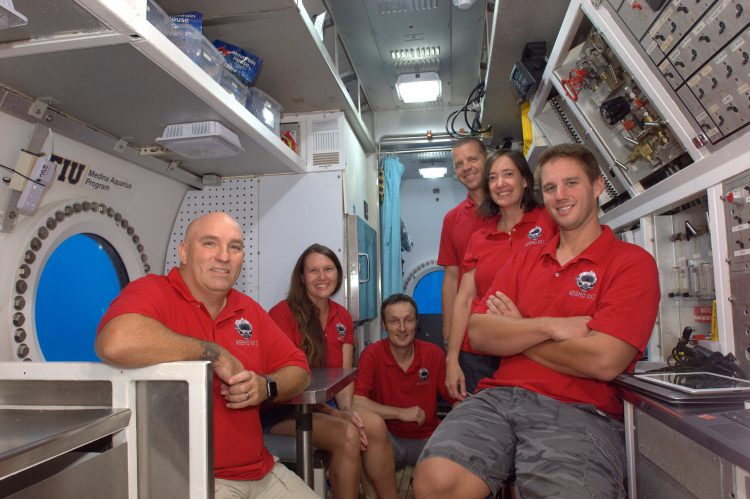
Published 8.5.16
A 4 hour tour…a 4 hour tour.
Once we completed our training Extravehicular Activity (EVA) dives for 1 and 2 hours a piece, it was time to complete a full 4 hour EVA. Megan and I were the first team up on Mission Day 11.
After we suited up, completed safety, staged out from the habitat and weighted ourselves out for partial gravity, we picked up the pre-stages sled packed with presampling tools, including the PAM fluorometer, temporary tags, the iDive iPad for identification and cue cards that the crew can use for information, and a tool kit stuff with smaller EVA tools. One of us is also carrying a Shark Marine navigator to guide us to the target site.
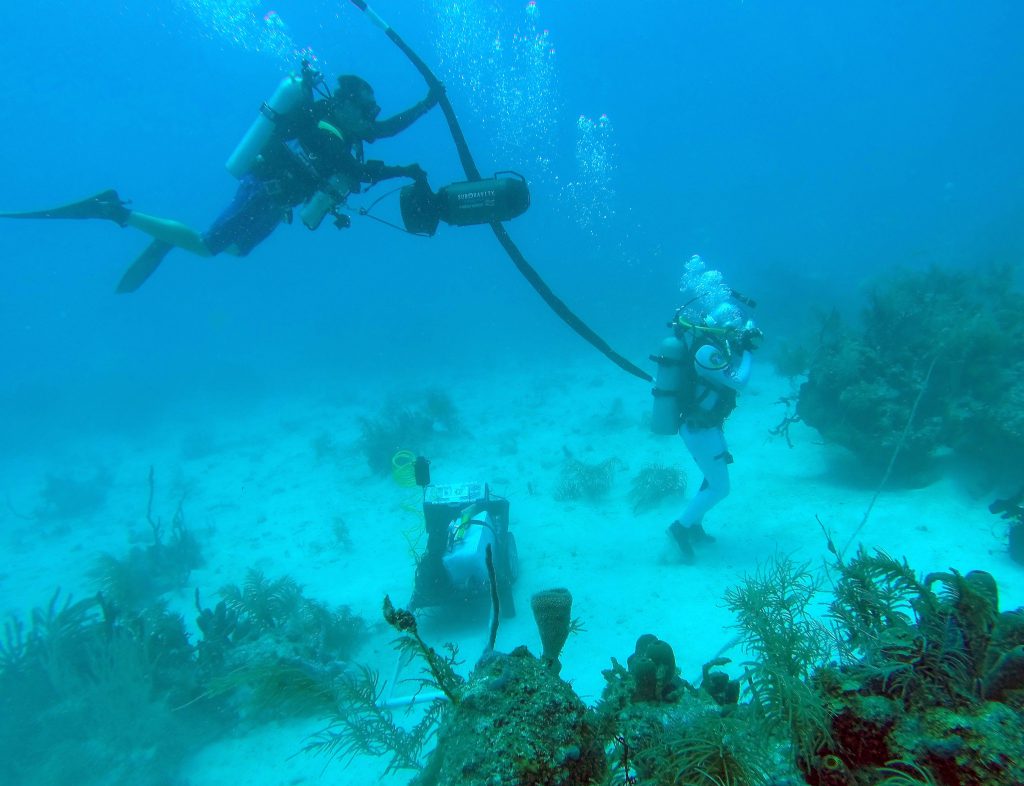
The goal: look for three specific types of coral in one of the ‘deep’ zones, ranging 80-95 FSW in depth. Pulling out sled behind us, we walked down the sandy slopes, past instruments and towering structures left from missions past, turned into artificial reef systems around the habitat. One of the most important things we have to pay attention to on our dives are where our umbilicals are in the water.
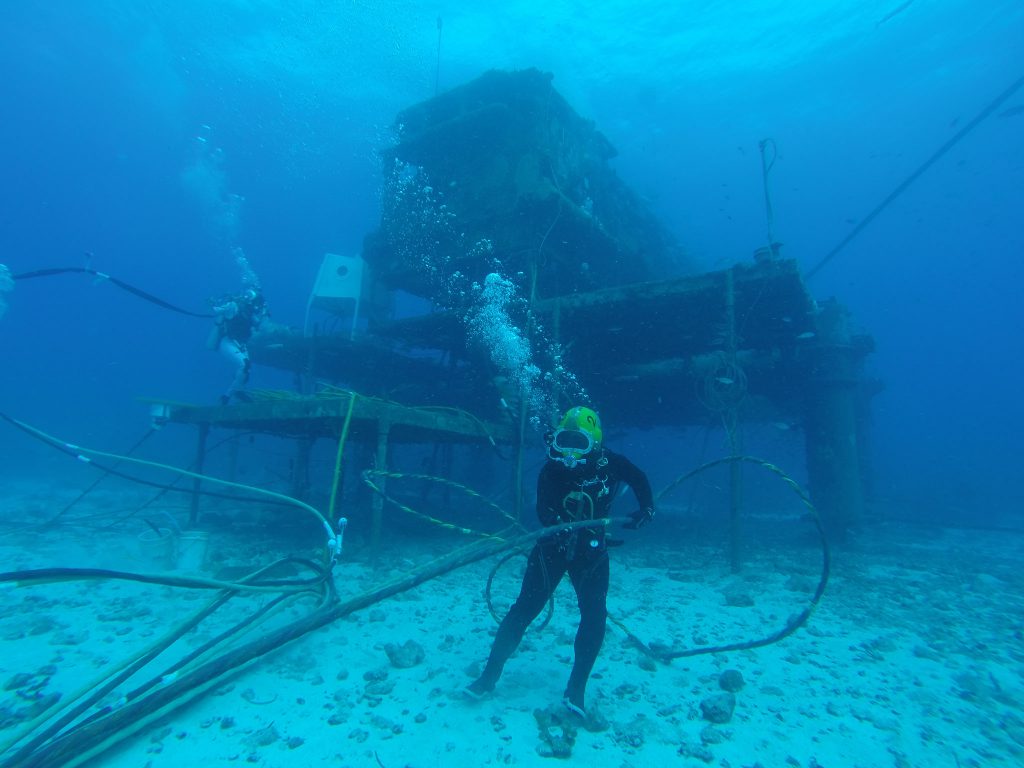
For this mission, we had up to 600 feet of umbilical, which include our air supply, comms, and pneumometer for gauging depth, running back to the habitat that we could work with, which can be an absolute snake best if not properly managed! We had to keep them from wrapping around coral, ourselves, and each other. THANKFULLY, our hard hat safety diver and one of the Aquarius Reef Base habitat technicians, Sean Moore, helped us manage them out to a certain point. After that, we had support divers in the water with Subgravity scooters keeping an eye on where the umbilicals ran as we went deeper. As I mentioned before, it definitely takes an experienced and hard-working village to do these missions safely!
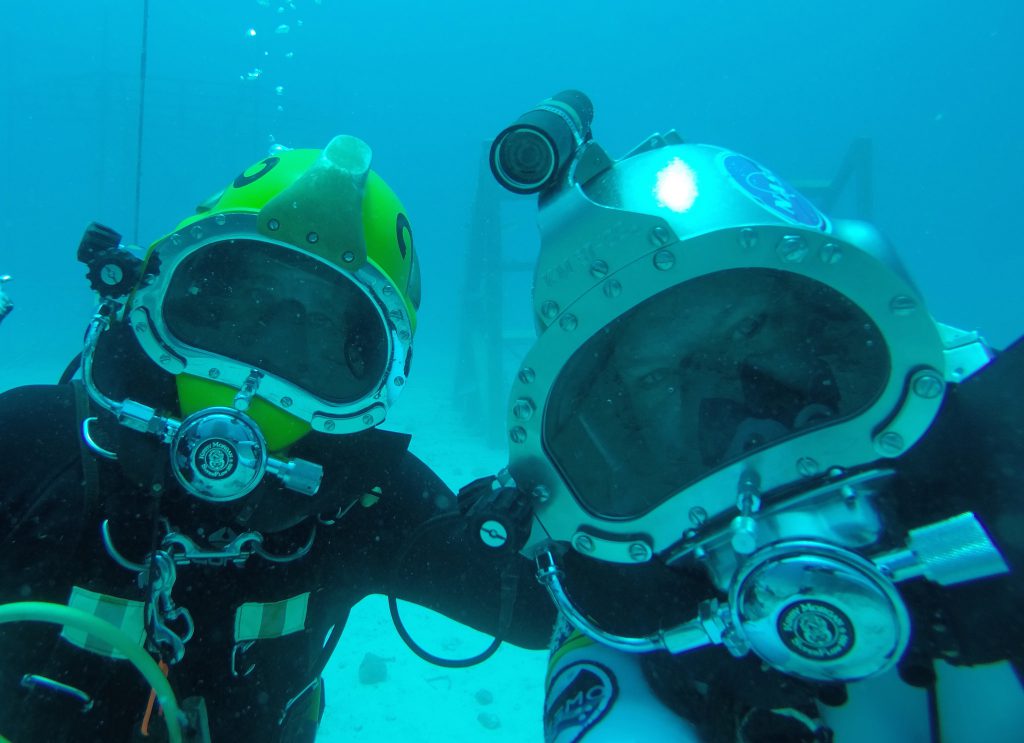
The traverse to the deep reef takes approximately 5 minutes, then we set the sled in a secure location and get to work searching for Orbicella faveolata, Agaricites humilis, and Agaricites agaricia. While some coral species were very easy to locate, others are not as prevalent in certain designated zones or depth ranges. We searched until we ran out of temporary tags, identifying 22 species for potential sampling! For each tagged coral, we then take photos and PAM readings for the science team to review. We read all of this information back to IV (the person running the show from inside the habitat), which is then relayed back to the science team via time-delayed messages and a data sheet. They will give feedback for our next EVA in which of the species they want us to sample. Ultimately, these procedures are all being evaluated as NASA moves towards planetary exploration missions, where boots on the ground will need to be able to relay science and exploration back to the appropriate support teams and Mission Control for decision making and data management.
When we wrapped up the presampling phase, we picked up the sled and walked back up the sandy slope towards the habitat, cutting left to the Mercury coral tree nursery that was built in collaboration with the Coral Restoration Foundation during the first half of the mission. We collected PAM readings from the samples there before heading back to the habitat, with the IV and Science Team calling it a successful day!
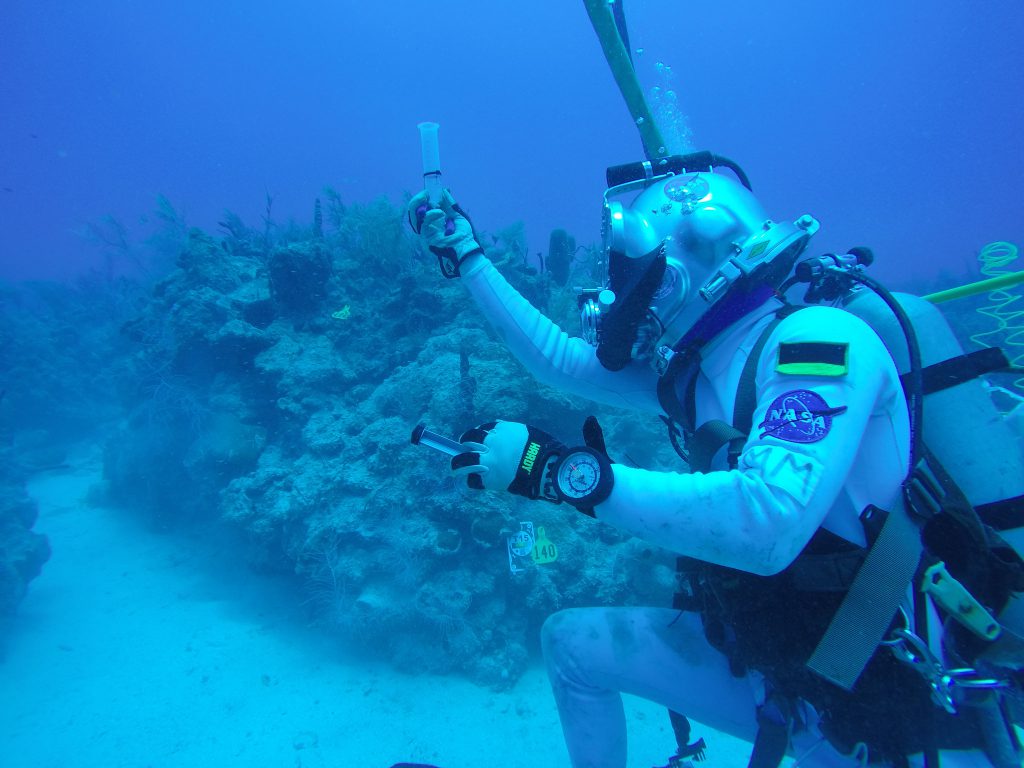
Compared to regular SCUBA, the hard hat system is amazing because of the real-time comms and continuous gas supply. The partial gravity weighting, plus the weight of the helmet, require strength and stamina throughout the dive – by the end of the executions, we can all definitely feel the physical and mental fatigue setting in – and a craving for pizza starts to kick in, too! IV is continuously asking us to rate our discomfort and perceived exertion (on a predefined scale) for feedback to Mission Control and as part of a study being conducted by NASA.
On Mission Day 12, I get to run IV communication – a little nervous while very excited to give it a go! Details to follow in be MD 12 blog!
Latest Blog Posts
- Mission Day 11: Orbicella faveolata, where art thou? August 05, 2016
- Mission Days 9-10: Settling in Undersea August 01, 2016
- Mission Day 7-8: Remembering Where We Are July 28, 2016
- Mission Day 6: Home is Where the Heart Is July 27, 2016
- Mission Day 5: Tales from the Topside July 26, 2016
- Mission Day 4: Time at Depth July 24, 2016
- Mission Day 3: It Takes a Village July 23, 2016
- Mission Day 2: Life Aquatic July 23, 2016
- Mission Day 1: Splash Down! July 21, 2016
- Countdown to Splash Down July 17, 2016
- Topside, this is Green Diver July 13, 2016
- NEEMO 21 Crew Training Begins! July 11, 2016
- Welcome to NEEMO 21! July 06, 2016

